Shopify and Etsy are chosen by a lot of people as their first platforms for selling goods online. However, each of them has specific advantages and disadvantages. Take a moment to read this blog post to learn how they compare.
Shopify and Etsy Comparison
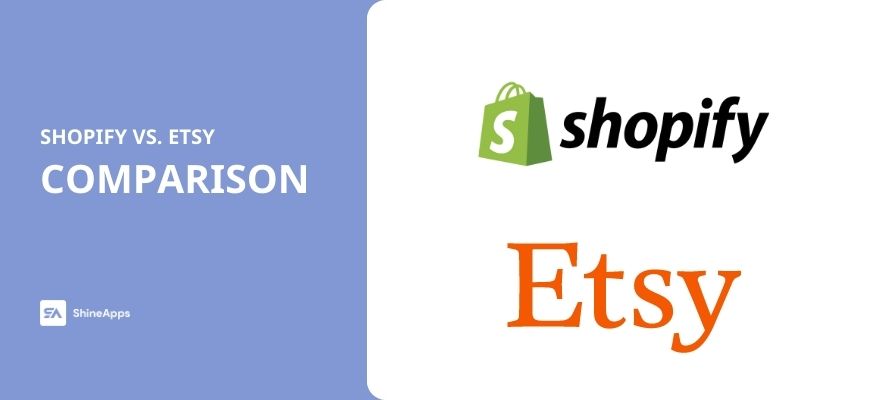
Shopify and Etsy are ecommerce platforms for shop owners to sell goods and services. The major difference between them is Shopify allows you to host a website store, use your domain, and get traffic by yourself, while Etsy allows you to create a storefront under the Etsy domain, for example, Etsy. com/shop/LaLaSolStudio and you can use the traffic from Etsy.
From many options from sellers who are selling on Shopify and Etsy, they offer that sales growth is better when they use both to support each other’s platforms.
Now, we will come to a detailed comparison to find out which one is suitable for you to start your business first!
Fees and Plan Comparison
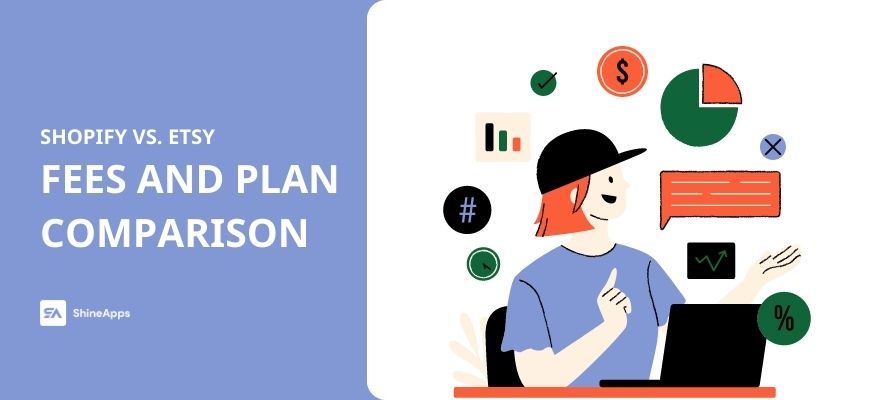
Shopify now offers a 3-day free trial, then $1 for the first 3 months. After that, you will be charged the price of the plan that you have chosen.
Starter Plan | Basic Plan | Shopify Plan | Advanced Plan | |
Monthly | $5/month | $25/month | $65/month | $399/month |
Yearly | $228/year | $588/year | $3588/year |
With Shopify, besides the plan’s fee, you need to pay processing fees, currency conversion fees, and third-party transaction fees if your country is not supported for using Shopify Payments.
Shopify’s transaction costs for online sales start at 2.4% + 30 cents and increase more with lower-priced options. You’ll pay more for each purchase because Etsy doesn’t charge a monthly fee unless you choose the Plus package. Due to the large number of these fees, third parties have created profit calculators for sellers.
See more about the fees and costs of Shopify here.
On the other hand, Etsy offers a free plan to open your store, and you need to pay $0.2 for one new or renewed listing. If you choose Etsy Plus, you need to pay $10 per month for more offers than the basic plan.
You pay a transaction fee of 6.5% of your listing price for each Etsy sale, in addition to the fees you charge for shipping and wrapping gifts. For sellers with US locations, payment processing fees are 3% plus 25 cents per transaction. If Etsy needs to change foreign currency into US dollars, there are exchange fees.
Customer Support Comparison
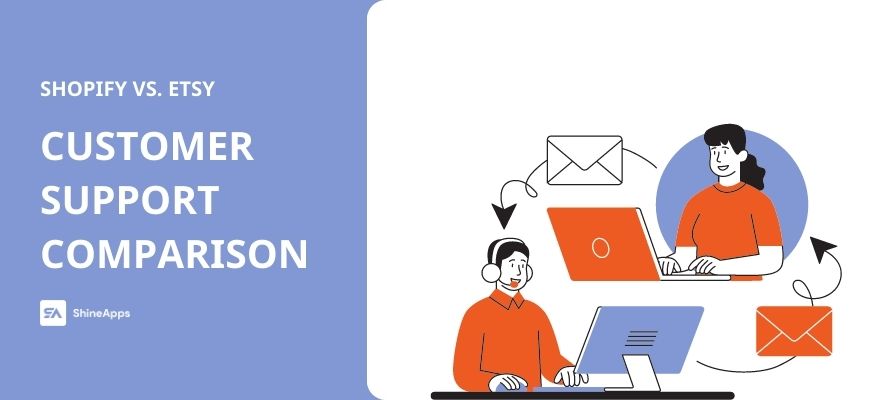
Shopify sellers have 24/7 access to chat, email, and phone customer support. While Etsy additionally supports this, you must first choose a phone-based problem from its customer service tree to get a phone number. Most questions will require you to email and wait two to five business days for a response.
Storefront Design Comparison

Shopify offers drag-and-drop design tools that let you build your storefront, while Etsy is just a marketplace. However, you can build a website that works with your Etsy Shop using the Etsy Pattern. If you use Etsy Plus, you have more options to customize the storefront with your domain.
Sellers can use common templates on both platforms for their procedures and policies. This is great for businesses that lack the knowledge necessary to clearly state their store policies or who are unsure of what those policies need to be.
Email Marketing Comparison
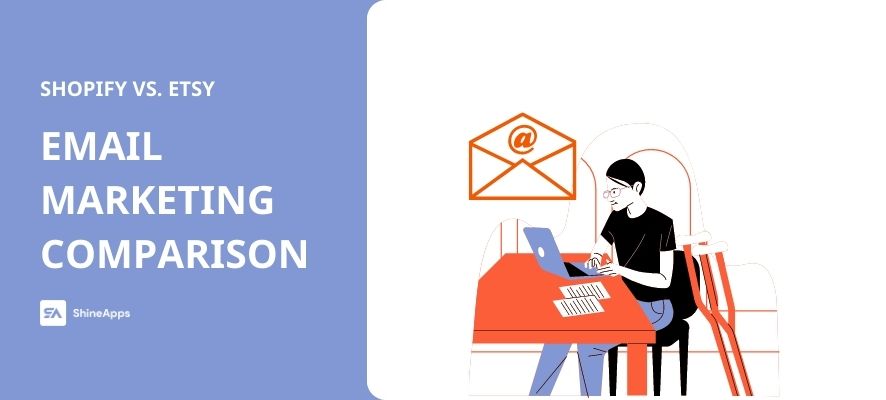
Because Etsy doesn’t provide customers with emails, you can only grow your customer base through its marketplace. This is an important difference between Etsy and Shopify.
Customers can “heart” your Etsy shop and sign up for new product notifications, but this is not the same as being able to send customers marketing emails. This would be a concern if the Etsy platform were to ever disappear. Keep in mind that if you use Etsy Pattern, which allows email marketing, this scenario does not apply to you.
With Shopify, you don’t have to worry about that because you can send newsletters and store updates as long as your consumer opts in for emails at checkout. You would still be able to market to your list of customers even if Shopify ran out of business.
Summary
| Shopify | Etsy | |
| Pros |
|
|
| Cons |
|
|
Better Together: Shopify and Etsy
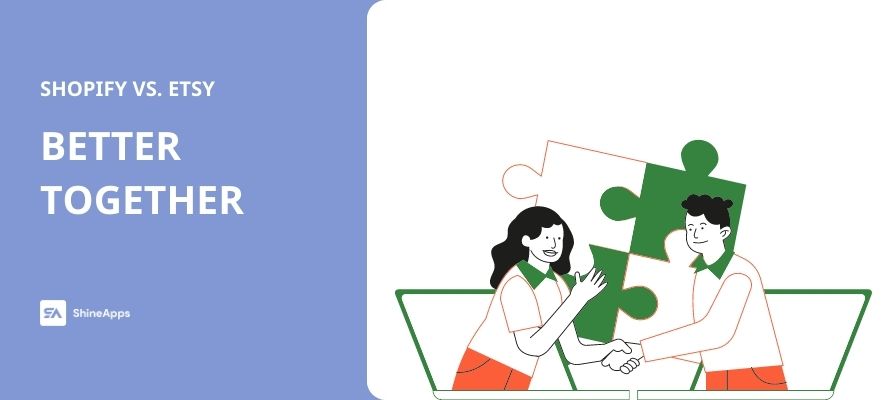
Despite the pressure retailers may feel to choose between Shopify and Etsy, the truth is that they can support each other.
If you sell both on Shopify and Etsy, you will have more opportunities to access more buyers. By using Shopify, you can get traffic by running ads and building your email list to promote your website, while Etsy has numerous potential consumers.
By automating operations like these, you can have a Shopify Etsy integration and leverage the potential of both channels:
Sync your Shopify store’s inventory and listings on Etsy. Whenever a new order is created on your Etsy online store, notify multiple departments.
To avoid overselling, remove a listing when the products run out of stock. At the end of the month, catalog all receipts or modify a listing if a product has been added to your Shopify store.
Because Etsy is a marketplace, it is made without identification in mind. That means that you must put in the time and customize your store to the platform’s algorithm if you want your products to be seen on Etsy.
You control your SEO (search engine optimization) on Shopify. Using effective marketing strategies, you can influence how your products appear on search engines and attract more customers.
You must publish items on your website or other platforms if you want to get organic traffic. The only other option you have is to provide a link to your Etsy product pages in a guest blog post.
The built-in blogging platform in Shopify, on the other hand, makes it simple for you to create and share content. Blog postings can be used to increase optimization for search engines, create brand awareness, and draw in organic visitors.
In Conclusion
After the comparison, you can choose to start your business with Shopify or Etsy based on your budget and strategy. After that, you can try both of them as a way to boost your sales by combining a marketplace and an ecommerce platform. Remember to check and read the terms and policies of Shopify and Etsy clearly before you start building up your online store!



